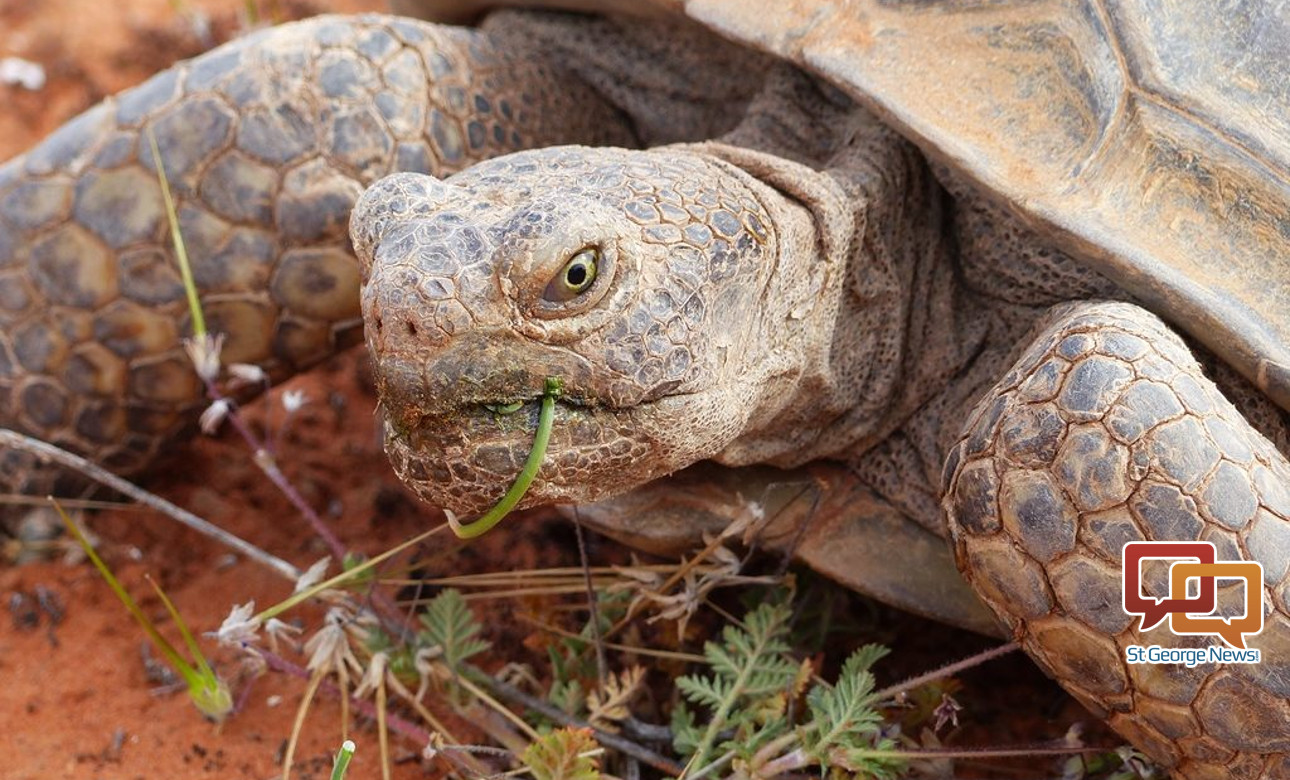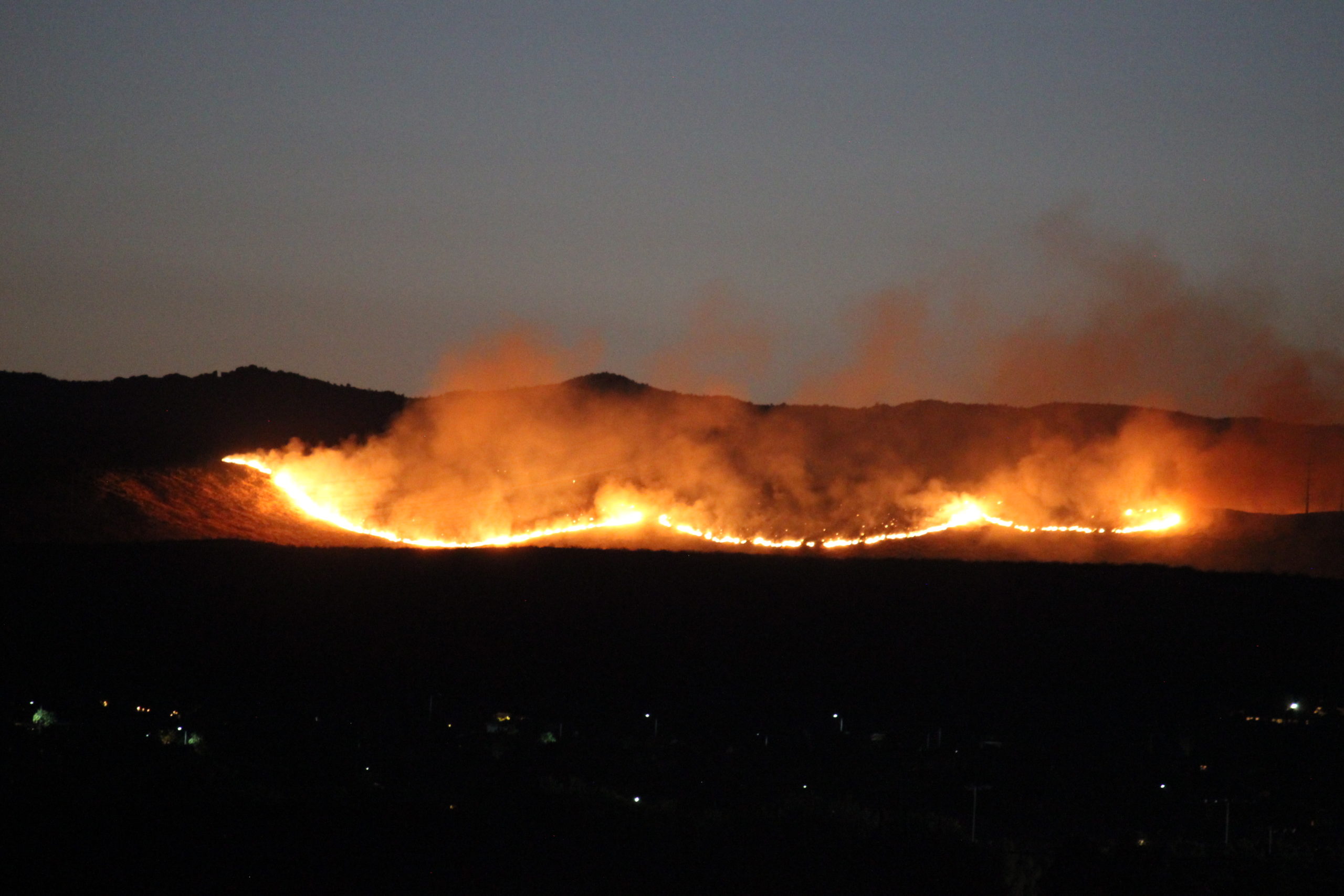ST. GEORGE — While Utah experienced some very slight relief from the drought with recent storms, worries over its continuing severity across the region continue, including concerns for the state’s wildlife and their collective habitat. Among the natural populations in southwest Utah the drought threatens, especially when connected to wildfire worries, is the Mojave desert tortoise.

“The drought definitely brings multiple layers of concerns for desert tortoises,” Mike Schijf, biologist for the Red Cliffs Desert Reserve, said in an email to St. George News.
The desert tortoise, while adapted to living in the desert, can begin to suffer the impacts of the prolonged drought as a part of its food supply fails to grow during very dry years, he said.
The tortoise relies on a variety of grasses and flowers for its dietary needs. The majority of the water the tortoise relies also comes from the vegetation it consumes.
“The biggest problems usually arise when we have multiple years of drought in succession,” Schijf said. “During these conditions, tortoises may become increasingly malnourished and/or dehydrated and may eventually die from a lack of food or water.”
Direct and indirect impacts
Professor Ken Nagy, of the University of California at Los Angeles’ department of ecology and environmental biology, has studied the desert tortoise for 40-plus years. In an email to St. George News, he wrote that the reptiles already have a stressful existence without climate change compounding their problems.

Nagy shared the results of a study conducted on a desert tortoise population in southern Nevada in the late 1970s that detailed how the animal tended to experience a degree of nutritional and hydration stress throughout the year. However, due to the tortoise’s life cycle, which includes hibernating for five months out of the year, these stresses seemed to achieve some level of balance for the tortoise provided they have enough food.
A separate study shared by Nagy conducted by Dr. Charles Peterson and published in the early 1990s showed a likely connection between desert tortoise mortality rates and periods of extreme drought.
Peterson studied two separate populations of tortoises and determined drought conditions could both directly and indirectly lead to deaths among the already threatened species.
Starvation and dehydration, as Schijf noted, were seen as the direct impacts chronic drought conditions could have on the desert tortoises that were a part of Peterson’s study. Indirect impacts noted in the study came from increasing susceptibility to disease and becoming a replacement prey item for coyotes due to a decrease in the mammals they normally feed upon.

Nagy said the two studies, along with others, show that “desert tortoises live a tough life under normal circumstances and that multi-year drought conditions can be fatal to many tortoises.”
“As one of the major consequences of climate change is multi-year droughts, die-offs of desert tortoises can be expected,” he wrote.
While coyotes haven’t been deemed a threat to the desert tortoise population residing in the Red Cliffs Desert Reserve, reserve staff have been keeping tabs on the raven population within the reserve that has preyed upon the tortoise. Whether the levels of this depredation have been impacted by the drought has yet to reported.
Drought and extreme heat can also have an impact on the desert tortoises’ reproductive capabilities, Schijf said.
No. 1 threat
Of all the threats the Mojave desert tortoise population and its habitat face from the drought, Schijf said the No. 1 threat is wildfire.

“Drought conditions lead to dryer fuel loads, meaning wildfires – whether lightning or human-caused – may ignite more easily and spread more rapidly,” he said. “The Mojave Desert is not a fire-adapted plant community, and invasive plants that have been introduced to the Mojave Desert ecosystem over the past century have greatly contributed to an increase in large wildfires.”
Wildfires in 2005 and 2006 destroyed an estimated 25% of desert tortoise habitat in the reserve and killed 15% of the tortoise population at the time. Some were caught in the fire and the forage for the others was turned to ash, leading to cases of starvation and dehydration.
Two large fires also impacted the reserve during the summer of 2020 that torched a combined 14,000 acres. These fires were also reported to have been the direct cause of death for at least 14 tortoises found during post-fire surveys conducted in the burn zones.
A reason why wildfires can ignite and spread across the reserve and the region so easily is due to the invasive species of grass called cheatgrass, or Bromus tectorum for the more scientifically inclined. The grass was brought to the United States from Europe in the 1890s and has since gone on to become one of the most pervasive range weeds in the West. It is also highly flammable.

“Once these areas burn, the native plants often do not fully recover, but cheatgrass and other invasive species will return to dominate the landscape, leaving these areas susceptible to future wildfires,” Schijf said. “We are also dealing with invasives such as Sahara Mustard and other non-native mustard species that contribute to our fuel load during the summer and create additional fire hazards.”
While drought dries out the cheatgrass faster and adds to wildfire worries, the plant creates similar concerns during wet years when winter and spring rains promote the explosive growth that ultimately adds more fuel for potential fires.
“This puts us in a tough situation almost every year. Even without a prolonged drought, these invasive plants will dry out and increase the fire danger,” Schijf said.
In the wake of wildfires that have run across the Red Cliffs Desert Reserves, state and federal lands agencies have engaged in multiple reseeding efforts.
Copyright St. George News, SaintGeorgeUtah.com LLC, 2021, all rights reserved.